#Oceanography news
Text
YES, PLASTIC BAG BANS HELP PREVENT POLLUTION REALLY WELL
"Plastic bags are everywhere - littering our streets, clogging up our rivers, and choking wildlife in the ocean.
But after years of campaigning from environmental groups, many places have banned them entirely.
Over 100 countries now have a full or partial ban on single-use plastic bags. Between 2010 and 2019, the number of public policies intended to phase out plastic carryout bags tripled.
The results of such tough rules are starting to show.
What is a plastic bag ban?
A plastic bag ban is a law that restricts the use of lightweight plastic bags in shops. Sometimes they are totally banned, and sometimes consumers have to pay a fee to buy them.
The bans often only apply to thin plastic bags, with thicker, reusable ones still available for purchase.
Bangladesh became the first country to introduce a ban on plastic bags back in 2002.

Such total bans are common throughout Africa and Asia. These areas import much of the Global North’s ‘recyclable’ rubbish and so face the consequences of plastic mismanagement more acutely.
In addition to plastic bags, many countries ban other types of single-use plastic like in the EU which has got rid of single use cutlery, straws, balloon sticks, and coffee buds.
Which European countries use the most plastic bags?
In Europe, 18 countries have imposed bans on thin plastic bags - including France, Germany, Italy, Iceland, and Albania.
A further 23 countries require consumers to pay a fee. Two more - Switzerland and Norway - allow the plastic industry to impose a ‘voluntary charge’ on the use of the bags.
Plastic bag consumption is highest in the Baltic and Nordic countries, Eurostat data from 2019 reveals. Latvia (284 bags per person, per year) and Lithuania (332) consumed far more plastic bags than any other European country. This could change, however as from 2025, Latvian shops will no longer be permitted to give away free plastic bags. A similar prohibition will come into force in Lithuania this year.
The lowest plastic bag usage can be found in Portugal (8), Belgium (17) and Poland (23). Portugal banned the bags in 2021, two years after Poland. [Note: To be clear, that is 8 plastic bags per person per year! Way lower than I thought was currently possible!]
Do plastic bag bans work?
Plastic bag bans have so far been highly successful. A ban on thin plastic bags in California reduced consumption by 71.5 per cent.
Research shows that taxes work too. According to a 2019 review of existing studies, levies and taxes led to a 66 per cent reduction in usage in Denmark, more than 90 per cent in Ireland, between 74 and 90 per cent in South Africa, Belgium, Hong Kong, Washington D.C., Santa Barbara, the UK and Portugal, and around 50 per cent in Botswana and China.
And the impact is visible on the ground too.
At a 2022 annual beach clean in New Jersey, US - where a ban was recently introduced - the number of plastic bags collected dropped 37 per cent on the previous year. Straws and takeaway containers dropped by a similar amount.
“It’s really, really encouraging to see those numbers trending down for the bags, straws, and foam containers,” said Clean Ocean Action Executive Director Cindy Zipf. Clean Ocean Action is a charity that is instrumental in organising the beach clean."
-via EuroNews.Green, 4/5/23
#sustainability#plastic pollution#plastic#single use plastic#plastic ban#pollution#water pollution#taxes#european union#california#denmark#iceland#ireland#new jersey#ocean#oceanography#good news#hope
394 notes
·
View notes
Text
4 Decades of Data Suggests Pacific Coral Reefs Can Acclimatize to Warming Oceans and Resist Future Bleaching https://www.goodnewsnetwork.org/4-decades-of-data-suggests-pacific-coral-reefs-can-acclimatize-to-warming-oceans-and-resist-future-bleaching/
#good news#nature#science#environmentalism#animals#environment#climate change#coral reef#oceanography#ocean life#marine biology
55 notes
·
View notes
Photo
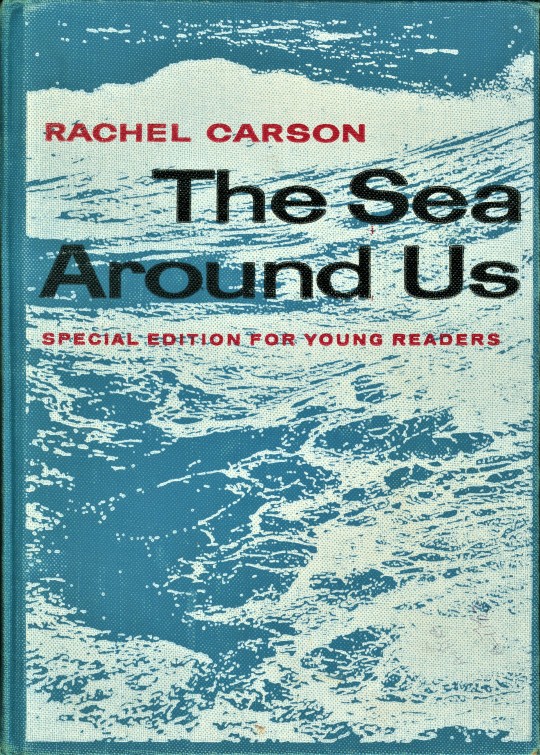
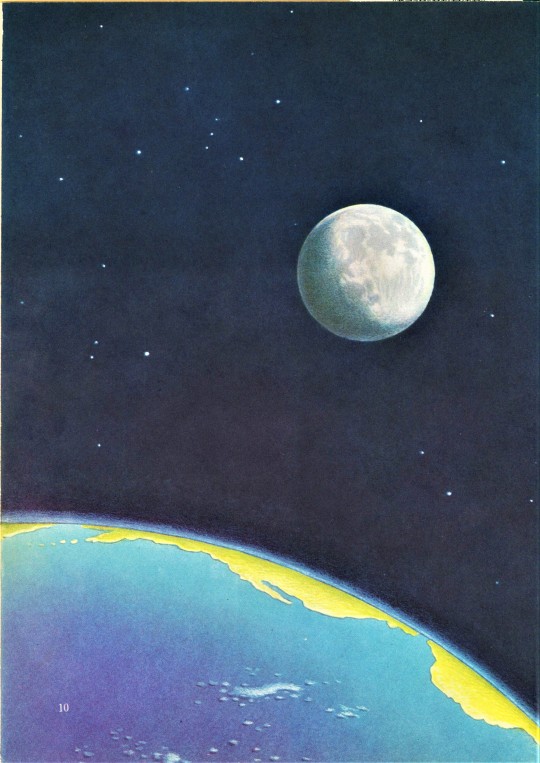
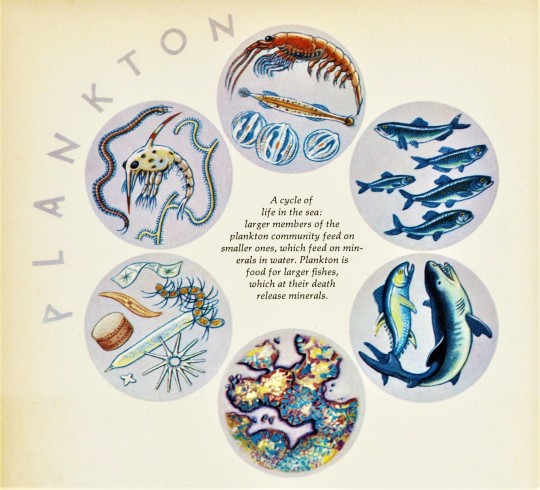
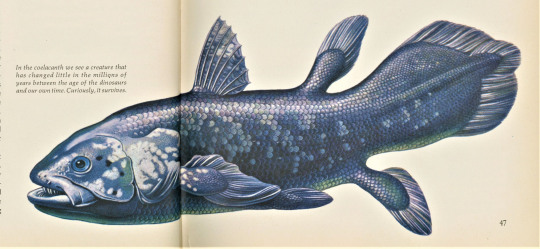

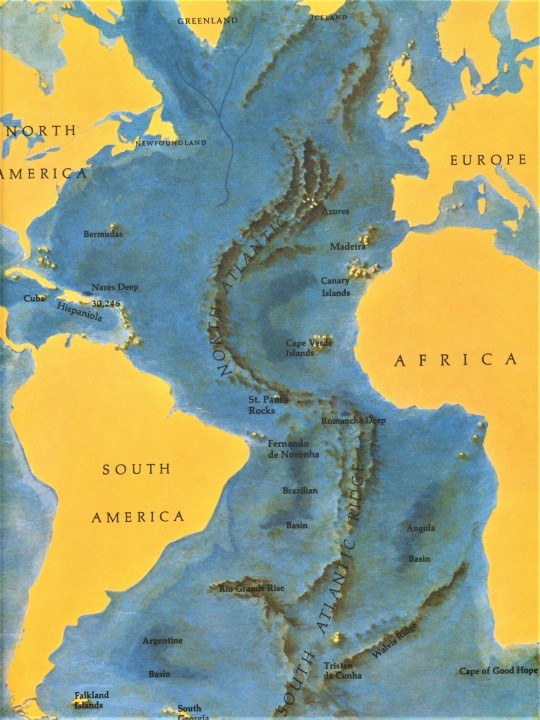

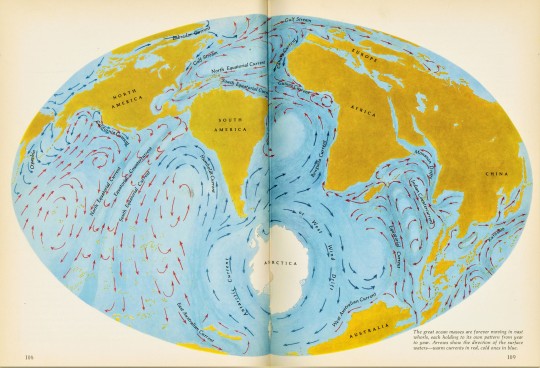

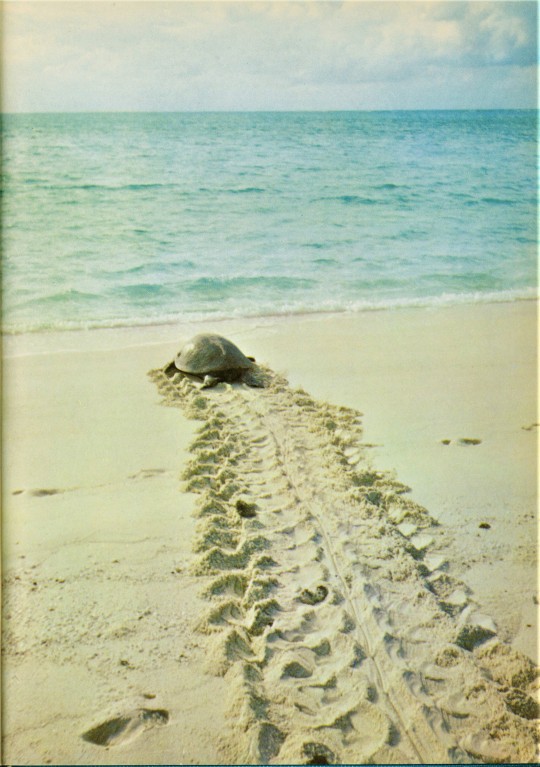
Science Saturday
RACHEL CARSON
In 1951 Oxford University Press published American marine biologist and conservationist Rachel Carson‘s critically-acclaimed book, The Sea Around Us. It became one of the most successful books ever written about the natural world. Rachel Carson's rare ability to combine scientific insight with moving, poetic prose catapulted her book to first place on The New York Times best-seller list, where it enjoyed wide attention for thirty-one consecutive weeks. It remained on the list for more than a year and a half and ultimately sold well over a million copies, was translated into 28 languages, inspired an Academy Award-winning documentary, and won both the 1952 National Book Award and the John Burroughs Medal.
In 1958, Simon and Schuster published this special edition for young readers, adapted by Russian Empire-born American writer Anne Terry White, with illustrations by Rene Martin and maps by Emil Lowenstein. It also includes an additional chapter by Jeffrey Levinton, a leading expert in marine ecology, who incorporates the most recent thinking on continental drift, coral reefs, the spread of the ocean floor, the deterioration of the oceans, mass extinction of sea life, and many other topics. In addition, noted nature writer Ann Zwinger contributed a brief foreword. The last photographic image shown here is by American science photographer Fritz Goro.
View our 2021 Earth Day post on Rachel Carson’s most influential book, Silent Spring.
View more Science Saturday posts
#Science Saturday#women's history month#science#oceanography#marine science#marine biology#marine ecology#Rachel Carson#women scientists#The Sea Around Us#Simon and Schuster#Anne Terry White#Rene Martin#Emil Lowenstein#Jeffrey Levinton#Ann Zwinger#Fritz Goro#children's books#Historical Curriculum Collection#New York Times best-seller
128 notes
·
View notes
Text
WHAT THE FUCK
#WHO THE FUCK ORGANIZED THIS FUCKING OCEANOGRAPHY CLASS#STOP ASSIGNING ME A NEW PROJECT EVERY DAY PLEASE#i already have two powerpoints and a lab to put together somehow im going to explode so much itll take a microscope to find me
1 note
·
View note
Text
Using photos to create 3D models is helping us understand – and protect – complex marine environments
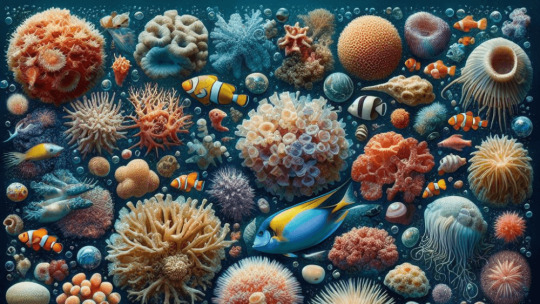
- By Professor James J Bell , Alberto Rovellini , Matteo Collina , Miriam Pierotti , Te Herenga Waka — Victoria University of Wellington , The Conversation -
Measuring the impact of different events, such as marine heatwaves, on the abundance of marine organisms is not easy. Biological communities naturally change over time and between different locations.
Scientists need to untangle these natural changes from those caused by humans and come up with a new approach to do this.
Marine biologists have traditionally monitored underwater cliffs or coral reefs by estimating population sizes in just a small area of those environments.
One traditional method involves laying a tape measure on the reef and determining what was under the tape at regular intervals. Another is to take pictures of “quadrats” – squares of a known area – and working out the area covered by different organisms later.
However, these methods only provide an estimate for a very small area of the total reef, covering a limited proportion of the animals and plants present.
They also provide limited information on the three-dimensional (3D) reef complexity and structure created by reef organisms, such as corals and sponges, which are key to supporting high biodiversity.
Our new research shows how modern photographic methods can be used to measure coral reef habitat complexity, and the 3D nature of reefs.
This information was then used to assess the impacts of changes from coral-dominated reefs to sponge-dominated reefs on the spaces available for fish and other organisms to live.
Here’s how it works.
An art and a science
Photogrammetry – a technique where 3D information is extracted from photographs – is both an art and science. The process involves taking a large number of images of an object or area from different angles. Using specialised algorithms we can then analyse and convert these pictures into 3D digital models.
These models can be appropriately scaled to real-world dimensions, allowing accurate measurements of organisms.
While photogrammetry is not new, its application to marine science has increased in recent years. It is completely changing the way we can monitor marine environments and measure human impacts.
However, there are many other ways broader photogrammetric tools can be used, from estimating the size of whales to developing realistic simulations or virtual reality experiences for education.
Our recently published study from Indonesia used photogrammetry to estimate the potential impacts of changes from coral-dominated to sponge-dominated tropical reefs on reef structural complexity.
The study compared the structural complexity of coral and sponge-dominated areas of a coral reef. By using photogrammetry, we were able to better understand the different factors that contributed to the coral’s structural complexity in a way that would not be possible from traditional 2D photographs.
This study found sponge-dominated reefs had fewer of the smallest spaces for fish and other organisms to live, whereas coral-dominated reefs had fewer larger spaces.
This information is important. The smallest spaces on coral reefs are occupied by small fish and other species that feed animals higher up the food chain. As coral reefs lose these small refuge spaces, they also lose the ability to support biodiversity.
Going bigger
While the Indonesian study examined only small sections of the reef, the use of photogrammetry for monitoring and mapping marine ecosystems is expanding rapidly.
Thanks to modern hardware and software solutions, it is now possible to rapidly create models for much larger areas. And thanks to high-resolution photography, even the smallest animals can be identified in the models.
These models are complementing the use of traditional sampling methods that only estimate the abundances of organisms in a small area of a reef. But we also have the potential to now sample entire reefs.
As models of reefs derived from photogrammetry are 3D, there are many different new sources of information that can be collected, such as accurate surface areas and volumes of organisms.
For many organisms, like sponges and corals, surface areas and volumes are more important in measuring their ecological importance than just the amount of reef they cover.
youtube
An example of the Fiordland underwater environment rendered through a game engine, and ready to be used for VR applications.
Moreover, 3D models of large areas can be oriented and scaled or geo-referenced, essentially creating all the characteristics of a typical map. This makes finding previously surveyed areas much easier.
The overall result is better characterisation of marine communities. This makes it easier to monitor and visualise changes, and the effects of different factors, such as marine heatwaves.
Finally, scaled 3D representations can be created for complex organisms, meaning growth and shape changes can be more accurately measured. This provides a greater understanding of how environmental change affects organisms.
Visualising changes in biodiversity
Virtual reality has long been used to provide access to marine environments without getting wet. This has been done largely for education, outreach and training opportunities.
But 3D models created from photogrammetry provide new and exciting opportunities to engage the public. People can now interact with the environment, experiencing new worlds and points of view, while learning and increasing their environmental consciousness.
The application of 3D models derived from underwater photogrammetry has great potential for the monitoring of marine environments and detecting the impact of humans.

These models represent a transformative shift in the way information is gathered in marine ecosystems. As technology develops further they will support more extensive marine monitoring and more effective management.
sketchfab
An example of a 3D model of Breaker Bay Reef in Wellington, New Zealand.
Professor James J Bell, Professor of Marine Biology, Te Herenga Waka — Victoria University of Wellington; Alberto Rovellini, Postdoctoral fellow, University of Washington; Matteo Collina, PhD candidate, Te Herenga Waka — Victoria University of Wellington, and Miriam Pierotti, PhD candidate, Te Herenga Waka — Victoria University of Wellington
This article is republished from The Conversation under a Creative Commons license. Read the original article.
--
Read Also
Scientists have mapped and identified the largest known deep-sea coral reef habitat in the world
#oceanography#vr#virtual reality#3d#marine life#biodiversity#imaging#corals#photogrammetry#new zealand
0 notes
Text
1 note
·
View note
Text
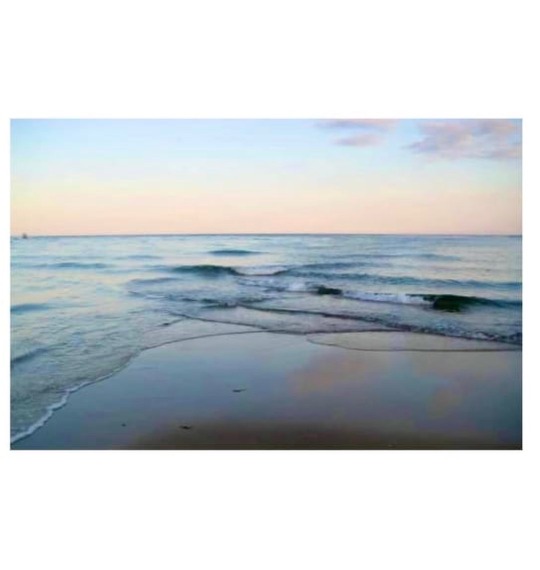
creeping of the cross sea - on waves & erosion
#resources linked at the bottom of the page#scicomm#nature writing#coastal#coastal resiliency#science#oceanography#coastal science#waves#ocean waves#nature photography#potatocam#canon#2000s#oceancore#erosion#coastal erosion#cape cod#new england#east coast#west coast#gulf coast#atlantic#pacific#women writers#nonbinary writer#jewish writer#writer#seacore#blue waters
1 note
·
View note
Text
Watch "The Coming Megaquake in New Zealand" on YouTube
youtube
0 notes
Text
National Maritime Museum acquires Liquid Traces: The Left to Die Boat Case from Forensic Oceanography
National Maritime Museum acquires Liquid Traces: The Left to Die Boat Case from Forensic Oceanography
The National Maritime Museum has recently acquired Liquid Traces: The Left to Die Boat Case, a video made by Forensic Oceanography researchers Lorenzo Pezzani and Charles Heller in 2014.
Forensic Oceanography is a project that emerged out of Forensic Architecture based at Goldsmiths, University of London. Liquid Traces interrogates the impact of policies and practices of abandoning migrant…

View On WordPress
#Forensic Oceanography#Maritime News#National Maritime Museum#Sea News#Shipping News#The Left to Die Boat
0 notes
Text
By Julia Conley
Common Dreams
April 25, 2023
Scientists are so alarmed by a new study on ocean warming that some declined to speak about it on the record, the BBC reported Tuesday.
"One spoke of being 'extremely worried and completely stressed,'" the outlet reported regarding a scientist who was approached about research published in the journal Earth System Science Data on April 17, as the study warned that the ocean is heating up more rapidly than experts previously realized—posing a greater risk for sea-level rise, extreme weather, and the loss of marine ecosystems.
Scientists from institutions including Mercator Ocean International in France, Scripps Institution of Oceanography in the United States, and Royal Netherlands Institute for Sea Research collaborated to discover that as the planet has accumulated as much heat in the past 15 years as it did in the previous 45 years, the majority of the excess heat has been absorbed by the oceans.
In March, researchers examining the ocean off the east coast of North America found that the water's surface was 13.8°C, or 14.8°F, hotter than the average temperature between 1981 and 2011.
The study notes that a rapid drop in shipping-related pollution could be behind some of the most recent warming, since fuel regulations introduced in 2020 by the International Maritime Organization reduced the heat-reflecting aerosol particles in the atmosphere and caused the ocean to absorb more energy.
But that doesn't account for the average global ocean surface temperature rising by 0.9°C from preindustrial levels, with 0.6°C taking place in the last four decades.
The study represents "one of those 'sit up and read very carefully' moments," said former BBC science editor David Shukman.
Lead study author Karina Von Schuckmann of Mercator Ocean International told the BBC that "it's not yet well established, why such a rapid change, and such a huge change is happening."
"We have doubled the heat in the climate system the last 15 years, I don't want to say this is climate change, or natural variability or a mixture of both, we don't know yet," she said. "But we do see this change."
Scientists have consistently warned that the continued burning of fossil fuels by humans is heating the planet, including the oceans. Hotter oceans could lead to further glacial melting—in turn weakening ocean currents that carry warm water across the globe and support the global food chain—as well as intensified hurricanes and tropical storms, ocean acidification, and rising sea levels due to thermal expansion.
A study published earlier this year also found that rising ocean temperatures combined with high levels of salinity lead to the "stratification" of the oceans, and in turn, a loss of oxygen in the water.
"Deoxygenation itself is a nightmare for not only marine life and ecosystems but also for humans and our terrestrial ecosystems," researchers from the Chinese Academy of Sciences, the National Center for Atmospheric Research, and the National Oceanic and Atmospheric Administration said in January. "Reducing oceanic diversity and displacing important species can wreak havoc on fishing-dependent communities and their economies, and this can have a ripple effect on the way most people are able to interact with their environment."
The unusual warming trend over recent years has been detected as a strong El Niño Southern Oscillation (ENSO) is expected to form in the coming months—a naturally occurring phenomenon that warms oceans and will reverse the cooling impact of La Niña, which has been in effect for the past three years.
"If a new El Niño comes on top of it, we will probably have additional global warming of 0.2-0.25°C," Dr. Josef Ludescher of the Potsdam Institute for Climate Research told the BBC.
The world's oceans are a crucial tool in moderating the climate, as they absorb heat trapped in the atmosphere by greenhouse gases.
Too much warming has led to concerns among scientists that "as more heat goes into the ocean, the waters may be less able to store excess energy," the BBC reported.
The anxiety of climate experts regarding the new findings, said the global climate action movement Extinction Rebellion, drives home the point that "scientists are just people with lives and families who've learnt to understand the implications of data better."
Read more.
#climate change#global warming#ocean warming#ocean acidification#deep ocean currents#degradation of ecosystems#ocean deoxygenation
966 notes
·
View notes
Text
It has been almost two decades in the making, but late on Saturday night in New York, after days of gruelling round-the-clock talks, UN member states finally agreed on a treaty to protect the high seas.
A full day after the deadline for talks had officially passed, the conference president, Rena Lee of Singapore, took to the floor of room 2 of the UN headquarters in New York and announced that the treaty had been agreed. At a later date, the delegates will meet for half a day to formally adopt the text. She made it clear the text would not be reopened.
“In Singapore, we like to go on learning journeys, and this has been the learning journey of a lifetime,” Lee said.
She thanked delegates for their dedication and commitment. “The success is also yours,” she told them.
She received cheers and a standing ovation from delegates in the room who had not left the conference hall for two days and worked through the night in order to get the deal done.

Pictured: The Intergovernmental Conference on Biodiversity Beyond National Jurisdiction congratulating its President, Ambassador Rena Lee, on the successful conclusion of the BBNJ treaty.
The historic treaty is crucial for enforcing the 30x30 pledge made by countries at the UN biodiversity conference in December, to protect a third of the sea (and land) by 2030. Without a treaty, this target would certainly fail, as until now no legal mechanism existed to set up MPAs [Marine Protected Areas] on the high seas.
Ocean ecosystems produce half the oxygen we breathe, represent 95% of the planet’s biosphere and soak up carbon dioxide, as the world’s largest carbon sink. Yet until now, fragmented and loosely enforced rules governing the high seas have rendered this area more susceptible than coastal waters to exploitation.
Veronica Frank, political adviser for Greenpeace, said that while the organisation hadn’t seen the latest text, “We are really happy. The world is so divided and to see multilateralism supported is so important.
“What’s really important is now to use this tool to develop this 30x30 target into force really quickly.” ...

Pictured: Activists from Greenpeace display a banner before the United Nations headquarters during ongoing negotiations at the UN on a treaty to protect the high seas in New York
“High seas marine protected areas can play a critical role in the impacts of climate change,” said Liz Karan, director of Pew’s ocean governance project. “Governments and civil society must now ensure the agreement is adopted and rapidly enters into force and is effectively implemented to safeguard high seas biodiversity.”
The High Ambition Coalition – which includes the EU, US, UK and China – were key players in brokering the deal, building coalitions instead of sowing division and showing willingness to compromise in the final days of talks. The Global South led the way in ensuring the treaty could be put into practice in a fair and equitable way.

Pictured: A world map that shows the full breadth and potential impact of the treat. National waters are shown in white, and international waters, or the high seas, are everything shown in blue.
Michael Imran Kanu, the head of the African Group and ambassador and deputy permanent representative to the UN for legal affairs of Sierra Leone, said the treaty was “robust and ambitious”. Kanu, who expressed concerns during talks over the fair and equitable sharing of benefits, said: “We really achieved amazing results” on this issue. Monetary and non-monetary benefits would be shared and an initial upfront fund would be set up under the treaty. He welcomed the adoption of the “common heritage of humankind” as a key principle for the high seas, which was a red line for many developing states. “That was significant for us”, he said...
In a move seen as an attempt to build trust between rich and poor countries, the European Union pledged €40m ($42m) in New York to facilitate the ratification of the treaty and its early implementation.
Monica Medina, the US assistant secretary for oceans, international environment and scientific affairs, who attended the negotiations in New York, said: “We leave here with the ability to create protected areas in the high seas and achieve the ambitious goal of conserving 30% of the ocean by 2030. And the time to start is now.”
-via The Guardian (US), 3/4/23
#marine protected areas#conservation#oceans#oceanography#international waters#united nations#30 by 30#30x30#biodiversity#climate change#overfishing#good news#hope
139 notes
·
View notes
Text
#european union#good news#oceans#ocean life#ocean conservation#marine biology#marine life#marine animals#oceanography#ocean
8 notes
·
View notes
Note
shy reader and lip are my favorite. but i was thinking maybe she’s like that because of family? they’re mean to her so it’s better for her to keep to herself and she doesn’t tell lip anything until he sees it for himself
thank you for the request, anon! I'm thinking northside!reader for this one
xxxxxxxxxxxxxxxxxxxxxxxxxxxx
We're walking to my house, the thin layer of snow crunching beneath our feet. Although I'm thankful that my private school allows long pants in the winter time, and that we're provided with a thick knit sweater as a part of our uniform options, I'm still freezing. I don't know how Lip does it. He seems just fine with his jeans and layered flannel.
"You cold?" He breaks the comfortable silence, and I nod, knowing that if I speak, my teeth will clatter together. He pulls me into him, his arm wrapping around my shoulder. It's nice, just the two of us and the snow. It's quiet and peaceful.
We reach my front door and I unlock it, inviting Lip inside. He takes his shoes off and follows me into my bedroom, where he sits on my bed. It's not our usual routine. Normally I prefer going to his house, but my family was going to be home early because of some special news coming from Harvard University for my sister. Lip decided yesterday he would spend time with me until he had to sneak out of my window so I'd be on time for dinner.
I sigh, joining Lip on my bed, Wuthering Heights in hand.
"Read to me?" I mumble. He's prepared for the question, and no matter how many times he smiles and says yes, I'm still a little embarrassed. It's easier when he reads to me because I can hear his voice reading the lines in my head. He smiles like he usually does, leaning back and taking the book from me. I lean against him, listening as he reads.
"Y/N!" I hear my mom call from downstairs. I look at Lip apologetically, telling him I'll be right back. I trudge down the stairs, trying to delay whatever my mom has to say. I walk into the kitchen, joining her and my siblings. Oh joy.
"Why didn't you put the dishes away?" She asks, annoyed at my presence. I can feel myself fold in slightly, ready for whatever the family wants to pile on me.
"I- I'm sorry, mom, it's just that the oceanography club ran late-" she cuts me off, not needing to hear my explanation.
"I don't care what happened, Y/N. You have these things to take care of because the rest of us are doing more important things. Your father and I both work full time jobs all day. Your brother is a football captain, and your sister is president of the debate team. They have well-fulfilled, promising lives in front of them. What do you have? A weird obsession with fish."
"I concur," my sister chimes in. "Are you like, attracted to them?" My brother laughs, joining in on the game. "Probably, I mean it's not like she's pretty enough to date a human!"
They continue to take turns, finding whatever flaws they can to comment on. I shrink into myself, waiting for them to get distracted by their own arrogance and start talking about themselves.
This moment comes like it usually does, but never fast enough. I walk away as quietly as possible, and return to my room. Lip looks at me, his eyes searching mine. He still has Wuthering Heights open, his thumb and index finger holding the spine open to the page we left off on. He places the book face down beside him on the bed, silently opening his arms in a welcoming gesture. Without hesitation, I take my spot in his arms as he pulls me into his chest, stroking my hair softly. I try to bite back my tears, but a few escape, and suddenly he has tear stains on his shirt.
"I'm so sorry, baby," he whispers to me, swaying slightly. "I didn't know. We'll figure something out, 'kay? No reason you can't come stay with me. The kids love you, and Fiona'll come around when we tell her what's goin' on. You and me, right?"
I smile slightly, nodding against him. "Right."
#fanfic#writing#shameless#ian gallagher#shameless us#lip gallagher#lip gallagher x reader#phillip gallagher#fiona gallagher#debbie gallagher#liam gallagher#comfort#fluff
461 notes
·
View notes
Text
I really wish we got to see what that first month of Rapunzel and Eugene's relationship was like
Because it would've been really interesting to see the reality set in for the fact that their relationship technically began 3 days after they met--that the first month or so of them essentially being boyfriend and girlfriend will be spent actually getting to know each other. They're both gonna be discovering all these things they didn't get to see in each other in those stressful, unrelenting first three days. They'll find out about their flaws and that there are things they might not like, which is perfectly normal in any relationship of course.
But they'll also discover all these crazy new things that they'll LOVE about each other, things that didn't have time to shine in those first three days. Things three days could never do justice, and boy are they grateful that their love survived those three days. Three days wouldn't have been enough, and oh there was so SO much more to discover. So all these beautiful things could never not outweigh all the uncovered flaws, and there's never that moment when either of them think they were wrong about the other, or that they jumped into things too soon, because its still them ^u^
wish me luck eepsters, I have an oceanography exam tomorrow. this bites 😖
#tangled#brushneb says stuff#tangled the series#rapunzel#eugene fitzherbert#rapunzels tangled adventure#disney rapunzel#disney#analysis#tangled eugene#new dream
132 notes
·
View notes
Text
stem confessions
FOOD SCIENCE: it's all bullshit. Food isn't real. We don't know anything about how it works. Any given food could make you immortal or kill you instantly for all we could say. Maybe it's all placebo or something. Don't get me wrong, if you don't eat you definitely die. But I basically just say whatever Cadbury or the Beef Council or whoever paid my latest grant says. I'm the Nesquik bunny with extra steps. Sometimes I imagine the grantmakers telling me when I'm allowed to piss or jerk off, and I have to admit the thought's been arousing lately
CLIMATOLOGY: you know, when i became a climate scientist i figured we'd be fighting global warming. But so many people donate their bodies to science. It turns out we have to spend so much time blowing up their bodies with dynamite that we don't have time to do climate science. Blowing them up and turning them into goop and mist is a full-time job, at least 8 hours a day, 5 days a week I spend doing it. I'll tell you how my day goes: I kiss my beautiful wife goodbye and drive to my job in the morning, I stuff dynamite into the bodies of dead people who donated their bodies to science, and obviously I have to stand well clear which also takes a lot of time - and, well, one thing leads to another, and then I'm home again, zero actual climate science performed. I haven't even read a paper since grad school, let alone written one. I know less about the weather than your local news team. At least they don't have to blow up all these dead guys with dynamite all the livelong day
ENGINEERING: I love murder and death and killing and violence and death and murder and killing and murder and death murder violence murder kill death violence violence violence violence
OCEANOGRAPHY: There's aliens down there man
318 notes
·
View notes
